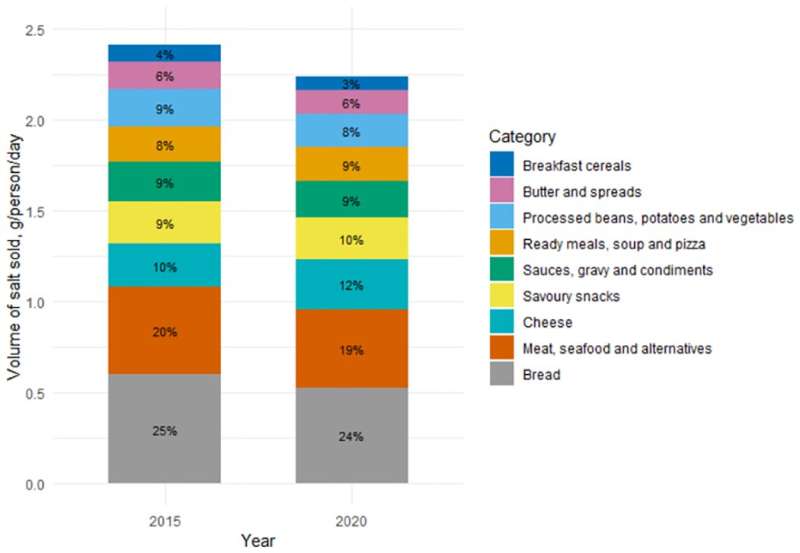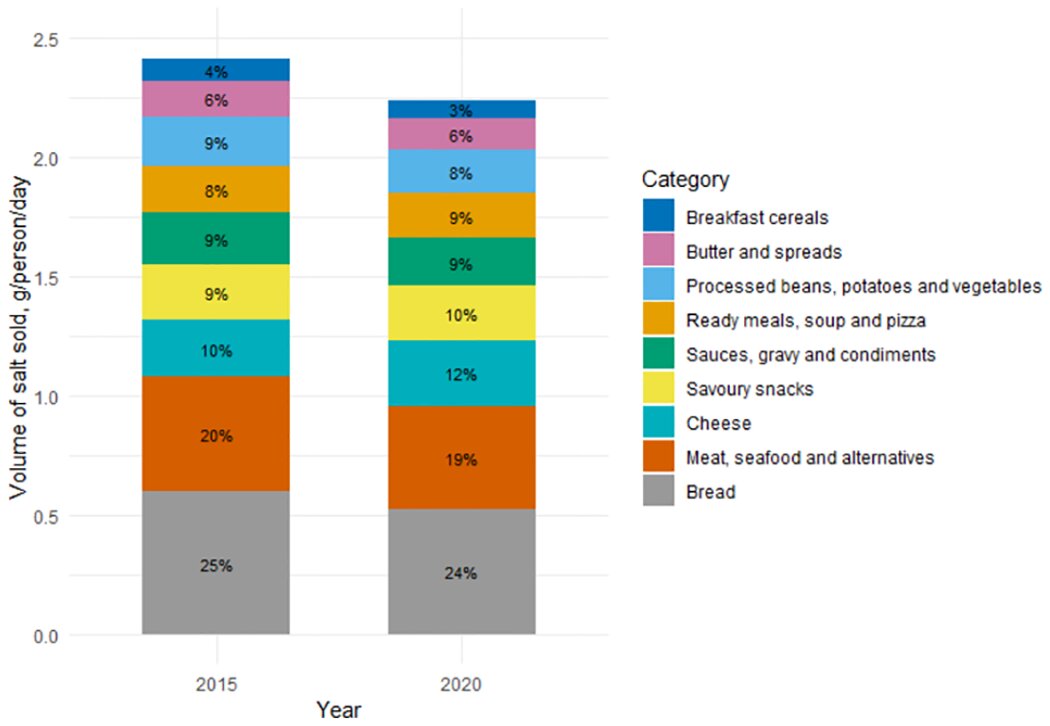
A study led by researchers from the University of Oxford found that, overall, the average salt content of food products sold at supermarkets showed no change between 2015 and 2020. The results have been published in PLOS Medicine.
Excess salt consumption increases the risk of high blood pressure and is thought to be responsible for at least 2.5 million deaths worldwide each year, mostly from strokes and cardiovascular disease (World Health Organization).
Reducing salt intake is therefore a public health priority. Since 2003, the UK Government has set a series of voluntary targets to encourage the food industry to reformulate products to contain less salt. These targets are not legally-binding, and it has been unclear how much progress has been made in recent years.
To investigate this, researchers from the University of Oxford assessed whether the amount of salt in a range of different foods sold in supermarkets had changed between 2015 and 2020. The study was based on the nine grocery food categories that contribute the most to adults’ salt intake in the UK. For each year, the analysis included approximately 8,000-9,500 food products from 400 different brands.
Key findings:
- The average salt content of all food products in the study fell by 5%, from 1.04g per 100g in 2015, to 0.99g per 100g in 2020, although this was not statistically significant.
- The biggest reductions were seen in breakfast cereals (-16%) and processed beans, potatoes and vegetables (-11%), but there was no change for bread (-2%) and ready meals (+1%). None of these changes were statistically significant.
- The categories with the highest salt content in 2020 were savory snacks (1.6g per 100g on average) and cheese (1.6g per 100g). Products with more than 1.5g salt per 100g are classed as ‘high’ in salt.
- The total volume of salt sold from all food products decreased from 2.41g per person per day in 2015, to 2.25g in 2020: a reduction of 0.16g per person (6.7%). Most of the salt sold came from three categories: bread (24%), meat, seafood and alternatives (19%), and cheese (12%).
- For certain products (ready meals, pizzas and soups) the volume of salt sold increased, with any reduction of salt content offset by rising sales.
- Overall, there has been little change in the average salt content and total volume of salt sold from these foods.
The study did not include table salt or salt consumed at restaurants, cafes, or fast foods, hence the total volume of salt consumed per person will be much higher.
According to the research team, several reasons may explain why little recent progress has been made to reduce salt in food products. Reformulating food products can be technically challenging, especially where salt acts as a preservative; there can be consumer resistance to low salt varieties; and there has been a recent shift in focus by industry and policy makers towards sugar and calorie reduction instead.
Lead author of the study, Dr. Lauren Bandy (Nuffield Department of Primary Care Health Sciences, Oxford University) says, “our results demonstrate that overall progress to reduce salt intake has stalled. Voluntary targets alone may be insufficient to achieve the Government’s target of a population salt intake of less than 6g per day and additional policy measures might be needed to achieve further progress. This could include mandatory reporting of salt sales by manufacturers to improve transparency—as has been called for in the National Food Strategy.”
Professor Graham MacGregor, Professor of Cardiovascular Medicine and Chairman of Action on Salt (who were not directly involved in the study), says that “reducing salt is the most cost-effective measure for lowering blood pressure and reducing the number of people suffering and dying from strokes, heart disease and life changing disabilities. The UK was once considered world-leading in our approach to salt reduction, but this paper and many others before it makes it clear that the voluntary approach is no longer fit for purpose.”
The nine categories of food products included in the analysis were: bread; breakfast cereals; butter and spreads; cheese; meat, seafood and alternatives; processed beans, potatoes and vegetables; ready meals, soup and pizza; sauces and condiments; and savory snacks.
Source: Read Full Article
